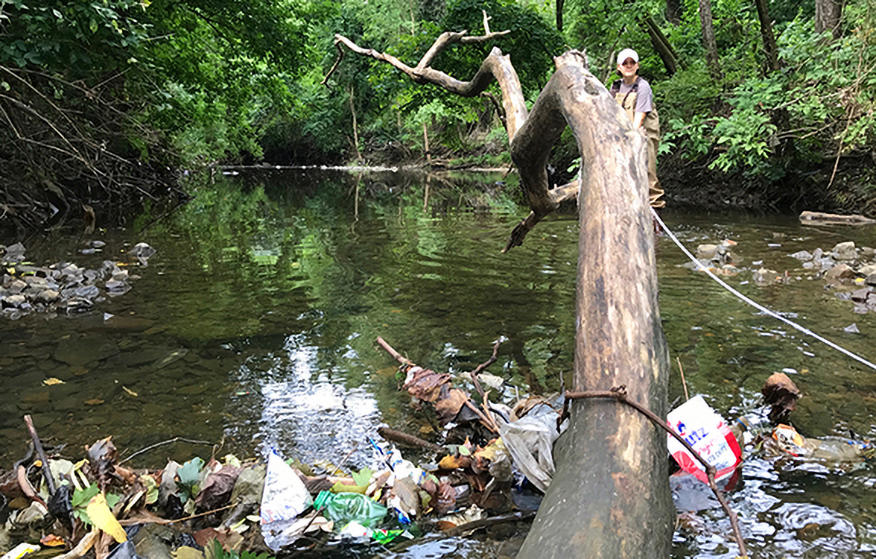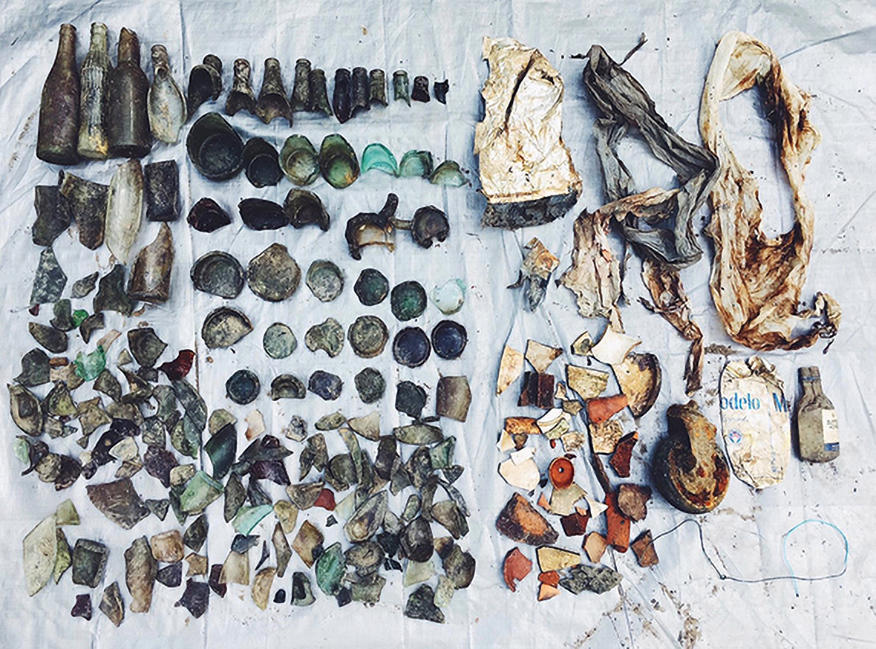How did you become interested in studying plastic pollution?
I've been working in urban environments for a while – including an oyster restoration project in New York City. One of the things I noticed was just how much garbage was in the environment. This got me thinking about how this pollution might be interacting with living things.
When I moved to Chicago, I did similar projects on invasive bivalves and their influence on water quality and nitrogen cycling. Again, I noticed that there was plastic everywhere. I knew this was an issue in oceans, but little work has been done to understand the abundance and effects of plastic pollution in freshwaters. So we started taking measurements – focusing on urban rivers that feed into Lake Michigan.
Tell me about your current work.
My lab has several projects exploring what kind of plastic pollution is in the environment, how it moves, where it goes, and how it interacts with living things.
One project involves experiments looking at different kinds of plastic pollution – from large pieces to microplastics – and measuring the microorganisms that grow on it. We want to know how microbes colonize plastic, whether or not they can decompose this material, and how these factors might affect the way that bugs or fish are ingesting plastic.
We have some evidence that shows that microplastic pieces that pass through wastewater treatment facilities retain microorganisms like fecal bacteria, which could pose a public health risk and should be killed in the treatment process. Instead, we think they are able to survive on plastics, end up in the water, and move downstream.
Most of the work we've been doing is in urban environments around Chicago and in Baltimore, but we're also interested in more rural areas. For one project, we measured microplastic in rivers that feed into Lake Michigan – with particular attention to how land use change and landscape features might increase or decrease microplastic in the environment.
Plastic is now part of the aquatic food web. How are you investigating this?
We want to know if plastic ingested by fish accumulates in their guts over time. I have a student who is feeding plastic to a round goby– an invasive fish here in Lake Michigan and one that we find ingests a lot of plastic – and recording when the plastic is excreted. So far, we’re finding that most will be excreted in a few days.
We also want to understand how plastic consumption by fish is changing over time. Another student is dissecting historical specimens of common Great Lakes fish species using the Field Museum’s collection of fish dating back to 1900. She has fish from every decade and is tracking microplastic in the stomach contents of those fish. What we’re seeing from the first species is that there's been a gradual but steady increase in microplastic since mid-century, when plastic first started entering the environment.

Have you encountered any standout community-led plastic pollution reduction efforts?
One group that we work with on litter collection programs, the Shedd Aquarium, started the ‘Shedd the Straw’ campaign. It aims to get local businesses, especially chambers of commerce and restaurant groups, to change their policies around plastic straws – things like offering straws only upon request, or offering alternatives like paper or metal straws. Relatively large restaurant groups have agreed to this policy and it’s been adopted and implemented quickly. We’re going to examine the data from litter collection on the beaches to see if that program is reducing the number of straws in the environment.
Another group that we work with, the Alliance for the Great Lakes, has coordinated beach cleanups on the Great Lakes since 2002. What’s unique about their cleanups is they have the volunteers tally what they find on the beaches and that information goes into an open-access database. Not only are the volunteers cleaning up the beaches, they're collecting data and contributing to science. This allows us to analyze what kind of plastic pollution is out there and explore what that might tell us about where it's coming from. This information can help guide conservation priorities.
How can individuals help reduce plastic pollution in the environment?
Simple actions like using reusable cups, straws, and shopping bags, instead of plastic ones, are important contributions – and ones that don’t require a lifestyle change. We all participate in an economy which is set up around throwaway materials. We can’t extricate ourselves from it entirely, but that’s no reason to not be optimistic about each of the small individual steps that are possible.
I've recently come to this analogy of voting. People sometimes say 'I shouldn’t vote; it doesn't matter’, but it does matter and it's also your responsibility. Doing any plastic-reducing action is the same sort of thing; it does matter and it is our responsibility to try.

Tim discussed his work on the ecology of plastic garbage – including its production, disposal, and accumulation in the environment – during a lecture held at Cary Institute.
Plastic Pollution in Freshwaters, From Rivers to Oceans






